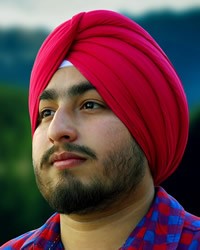Punjabi in Reunion

Photo Source:
Web Flippy - Pixabay
|
Send Joshua Project a map of this people group.
|
| People Name: | Punjabi |
| Country: | Reunion |
| 10/40 Window: | No |
| Population: | 3,400 |
| World Population: | 2,064,400 |
| Primary Language: | Punjabi, Eastern |
| Primary Religion: | Hinduism |
| Christian Adherents: | 10.00 % |
| Evangelicals: | 0.50 % |
| Scripture: | Complete Bible |
| Ministry Resources: | Yes |
| Jesus Film: | Yes |
| Audio Recordings: | Yes |
| People Cluster: | South Asia Muslim - other |
| Affinity Bloc: | South Asian Peoples |
| Progress Level: |
|
Introduction / History
A vast majority of the Punjabi live in India and Pakistan; however, large Punjabi communities can also be found in nearly thirty other countries. While the living conditions of the Punjabi differ greatly from country to country, they have retained much of their traditional culture and lifestyle. One of the countries where Punjabis live is Reunion, a small island to the east of Africa and Madagascar.
The name "Punjabi" is used to describe both those who speak Punjabi, and those who inhabit the Punjab region in India and Pakistan. Punjabi is an Indo-European language that is divided into six main dialects. It is primarily spoken in the major regions of India and Pakistan.
What Are Their Lives Like?
The caste system in India is not fully supported by religion, as it is specifically rejected by Islam and Sikhism. Most of the Diaspora Punjabi who are Hindu, are of the higher castes and are usually well educated. Because of their educational achievements, Punjabis in Reunion are doing well as one of the business communities.
The Punjabi immigrants have taken on a variety of occupations. Many Sikhs have excelled as mechanics, construction workers and as business professionals. Other Punjabis have found work in retail and trade, particularly through small family businesses.
In traditional Punjabi culture, the men are responsible for overseeing the family possessions such as land, shops or other business assets. The women are responsible for overseeing the homes. Wives cook, care for the children, manage the household finances, and take care of any domestic animals.
Marriage is highly desired among all Punjabi, whether Muslim, Hindu or Sikh. Traditionally, residences were patrilocal, which means that young couples lived in the husband's village near his parents. However, in most Diaspora Punjabi communities, this does not occur. Newly married couples set up their homes wherever they choose. Marriages can still be arranged by parents, but this is rarely done without extensive discussions.
What Are Their Beliefs?
The Diaspora Punjabi reflect the three major religions of their homeland: Hinduism, Islam, and Sikhism. Most of the Diaspora Punjabi speakers are Sikhs, but in Reunion they are more likely to be Hindus though there are also many Sikhs among them. This is one of the places where there is a sizable Punjabi Christian community as well.
What Are Their Needs?
Even in predominantly Christian countries, such as Tanzania, Kenya, and Réunion, Punjabis comprise a very small Christian population. There is a great need for church planting teams to focus on the Punjabis.
Prayer Points
Pray for the Holy Spirit to give the Punjabis in Reunion a spiritual hunger that will drive them into the loving arms of Jesus.
Pray for dedicated workers to disciple them to disciple others.
Ask the Lord to raise up churches that will plant more churches among the Punjabi.